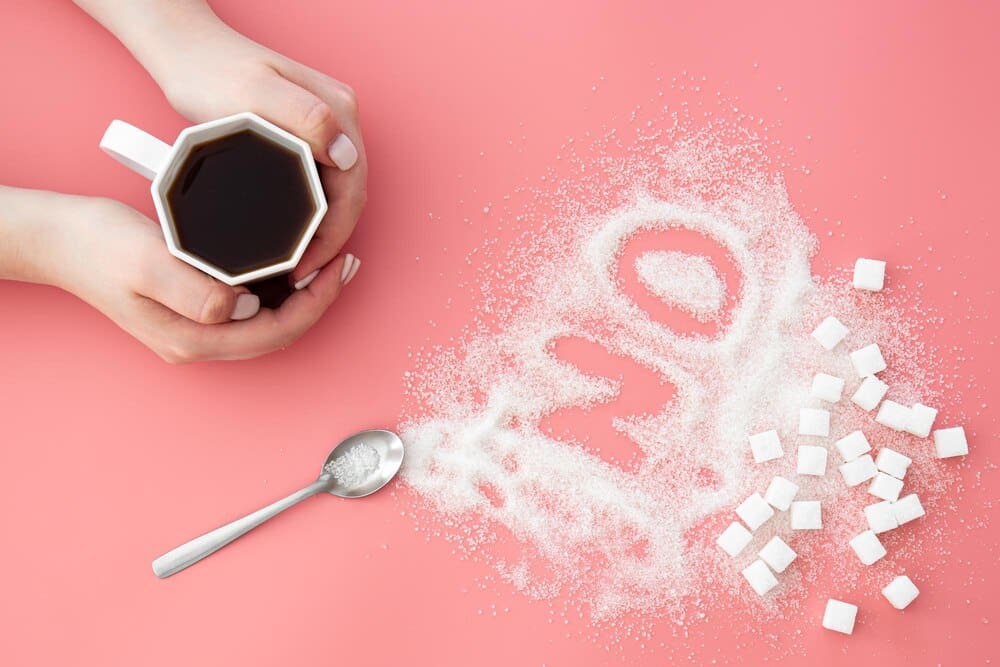Tackling persistent sugar cravings requires more than sheer willpower; it demands a strategic, science-backed approach that addresses the root causes. For anyone who has found themselves locked in a cycle of intense desire for sweets, understanding the “why” is the first step toward lasting control. These cravings are driven by a complex interplay of brain chemistry, blood sugar fluctuations, gut health, and learned behaviors. The most effective way to stop them involves both immediate tactics to defuse a craving in the moment—like drinking water or taking a short walk—and long-term lifestyle adjustments, such as prioritizing protein and fiber, managing stress, and getting adequate sleep, to prevent them from occurring in the first place.
Why We Crave Sugar: The Science Explained
Before you can effectively combat sugar cravings, it’s essential to understand what’s happening inside your body and brain. These urges are not a sign of personal failure but a powerful biological and psychological response. By demystifying the process, you can begin to dismantle it piece by piece.
The Brain’s Reward System
When you consume sugar, it triggers the release of dopamine, a neurotransmitter associated with pleasure and reward, in a region of your brain called the nucleus accumbens. This is the same reward pathway activated by addictive substances and highly motivating behaviors. Your brain quickly learns to associate sugar with this pleasurable feeling.
This creates a potent feedback loop. Your brain remembers the “reward” and, when you’re feeling down, stressed, or simply see a trigger, it will push you to seek out that same pleasurable experience again. Over time, this can lead to a tolerance where you need more sugar to achieve the same dopamine hit, deepening the cycle of craving and consumption.
The Blood Sugar Rollercoaster
One of the most significant physiological drivers of sugar cravings is unstable blood glucose. When you eat a high-sugar snack, especially on an empty stomach, it’s rapidly absorbed into your bloodstream, causing a sharp spike in blood sugar levels.
In response, your pancreas releases a large amount of insulin to move that sugar out of your blood and into your cells for energy. This process is often too efficient, leading to a rapid “crash” where your blood sugar drops below normal levels. This state, known as reactive hypoglycemia, triggers feelings of fatigue, irritability, and, most importantly, an intense craving for more sugar to bring your energy levels back up quickly.
The Gut-Brain Connection
Your gut is home to trillions of microorganisms, collectively known as the gut microbiome, which play a critical role in everything from digestion to immune function. This ecosystem is also in constant communication with your brain via the gut-brain axis.
Certain types of “unfriendly” bacteria and yeast thrive on sugar. When their populations grow, they can send signals to your brain that effectively demand more of their preferred fuel source—sugar. An imbalance in your gut flora, a condition called dysbiosis, can therefore be a direct driver of your cravings, creating a vicious cycle where eating sugar feeds the very microbes that make you crave it.
Habit and Emotional Triggers
Beyond biology, cravings are deeply rooted in psychology and habit. Through a process called classical conditioning, we often link sugar consumption with specific times, places, activities, or emotions. That 3 p.m. slump, the dessert after dinner, or the tub of ice cream after a stressful day are all powerful, learned associations.
Sugar is also a common tool for emotional self-soothing. It provides a quick, reliable, and socially acceptable way to cope with stress, boredom, sadness, or loneliness. When these emotions arise, your brain may automatically turn to sugar as a learned coping mechanism, regardless of your actual physical hunger.
In the Moment: How to Stop a Craving Now
When a powerful craving strikes, having a plan of action is crucial. The goal is to interrupt the craving cycle before you give in. Most cravings are fleeting, often lasting only 15-20 minutes, so these immediate strategies can help you ride out the wave.
Drink a Glass of Water
Thirst is frequently mistaken for hunger or a food craving. Before reaching for a sweet treat, drink a full glass of water and wait a few minutes. This simple act can sometimes be enough to satisfy the urge, and it also helps promote a feeling of fullness.
Go for a Brisk Walk
Changing your environment and engaging in light physical activity can be a powerful pattern interrupt. A short, 5-to-10-minute walk gets you away from the trigger (like your kitchen), boosts circulation, and releases endorphins, which are natural mood elevators that can diminish the craving.
Choose a Healthy, Satisfying Snack
If you are genuinely hungry, fighting the craving with pure willpower is a losing battle. Instead, opt for a snack that combines protein, fiber, and healthy fats. This combination stabilizes blood sugar and promotes satiety, effectively shutting down the craving.
Excellent choices include a handful of almonds, a small apple with a tablespoon of peanut butter, a hard-boiled egg, or a small bowl of plain Greek yogurt with a few berries. These foods provide a steady release of energy, unlike the spike and crash from sugar.
Practice Mindful Distraction
Distract your brain by engaging in a task that requires your focus. Call a friend, listen to an engaging podcast, tackle a quick five-minute chore, or play a game on your phone. The key is to shift your mental energy away from the craving until it subsides.
Building a Craving-Resistant Lifestyle: The Long Game
While immediate tactics are useful, the ultimate goal is to prevent strong cravings from developing in the first place. This involves building sustainable habits that support stable blood sugar, a healthy gut, and balanced brain chemistry.
Prioritize Protein and Fiber at Every Meal
Protein and fiber are your greatest allies in the fight against sugar cravings. They slow down digestion and the rate at which sugar is absorbed into the bloodstream, preventing the dramatic spikes and crashes that drive cravings. Aim to include a source of protein (like chicken, fish, beans, or tofu) and fiber (from vegetables, fruits, and whole grains) in every meal.
Don’t Fear Healthy Fats
Dietary fats, particularly those from sources like avocados, nuts, seeds, and olive oil, are essential for satiety. Fat takes longer to digest, helping you feel full and satisfied for hours after a meal. Including healthy fats reduces the likelihood that you’ll feel the need for a quick-energy sugar fix between meals.
Manage Your Stress Levels
Chronic stress leads to elevated levels of the hormone cortisol, which can increase appetite and drive cravings for high-sugar, high-fat “comfort foods.” Incorporating stress-management techniques into your daily routine is non-negotiable for long-term craving control. This can include meditation, deep breathing exercises, yoga, journaling, or spending time in nature.
Prioritize Quality Sleep
Sleep deprivation wreaks havoc on the hormones that regulate hunger and satiety. Lack of sleep causes levels of ghrelin (the “I’m hungry” hormone) to rise, while levels of leptin (the “I’m full” hormone) fall. This hormonal imbalance creates a perfect storm for intense cravings, particularly for junk food. Aim for 7-9 hours of quality sleep per night.
Rethink Your “Treats”
Shift your mindset away from using food as a primary reward. When you accomplish something or need to unwind, find non-food-related ways to celebrate or de-stress. This could be taking a relaxing bath, buying a new book, listening to your favorite album, or spending time on a hobby you love. Breaking the food-as-reward cycle is a critical step in changing your relationship with sugar.
Ultimately, overcoming sugar cravings is a journey of understanding your own body and mind. It’s not about restriction or deprivation, but about nourishing yourself with whole foods, managing your emotional well-being, and building a lifestyle that promotes balance. By combining immediate, practical tactics with long-term, sustainable habits, you can break free from the craving cycle and take definitive control of your health.







